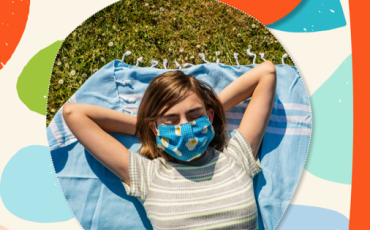ACCG Statement on Youth Justice in Detention (2017)
Archived
You are in an archived section of the website. This information may not be current.
This page was first created in November, 2017

ACCG Statement on Conditions and Treatment in Youth Justice Detention (2017)
Noting that detention of children and young people should be used as a last resort and that all possible efforts must be made to maximise diversion of children and young people who offend, the ACCG calls on all state and territory governments4 to apply the following principles on the conditions and treatment in youth justice detention centres operating within their jurisdictions:
1. Children and young people in youth justice detention should have their rights respected and supported, including their rights to participate in decisions that affect them.
2. The approach to working with children and young people in youth justice detention centres should be trauma-responsive.
3. Children and young people in youth justice detention should be provided with supports and services that respond to the drivers of their offending, promote their development and meet their other needs.
4. Planning and support for community reintegration should start when a child or young person enters youth justice detention and continue after their release into the community.
5. Additional measures should be adopted to address the overrepresentation of Aboriginal and Torres Strait Islander children and young people in youth justice detention, ensure cultural appropriateness in the detention environment, and ensure the right of the child or young person to exercise their culture.
6. Behaviour management and support should be developmentally appropriate and promote the safety, wellbeing and human rights of children and young people.
7. The use of restraints on a child or young person should be prohibited, except when necessary to prevent an imminent and serious threat of injury to the child or others, and only when all other means of control have been exhausted. The use of restraints should not cause humiliation or degradation, should be used restrictively and only for the shortest possible period of time, and should be publicly reported to an independent oversight mechanism. The use of restraints as punishment should be prohibited.
8. The use of force on a child or young person should be prohibited, except when necessary to prevent an imminent and serious threat of injury to the child or others, and only when all other means of control have been exhausted. The use of force should not cause humiliation or degradation, should be used restrictively and only for the shortest possible period of time, and should be publicly reported to an independent oversight mechanism. The use of force as punishment should be prohibited.
9. Searches of a child or young person should be conducted only when reasonable, necessary and proportionate to a legitimate aim. Searches should be publicly reported to an independent oversight mechanism.
10. The use of isolation on a child or young person should be prohibited, except when necessary to prevent an imminent and serious threat of injury to the child or others, and only when all other means of control have been exhausted. Isolation should be used restrictively and only for the shortest appropriate period of time, and be publicly reported to an independent oversight mechanism. The use of isolation as punishment, or on a vulnerable child or young person, should be prohibited.
11. Lockdowns should only be used as a last resort and only in strictly limited circumstances.
12. Youth justice centres should have adequate, skilled staff who are demographically representative of the children and young people in detention, including Aboriginal and Torres Strait Islander staff.
13. Youth justice detention centres should be subject to external and independent oversight.



